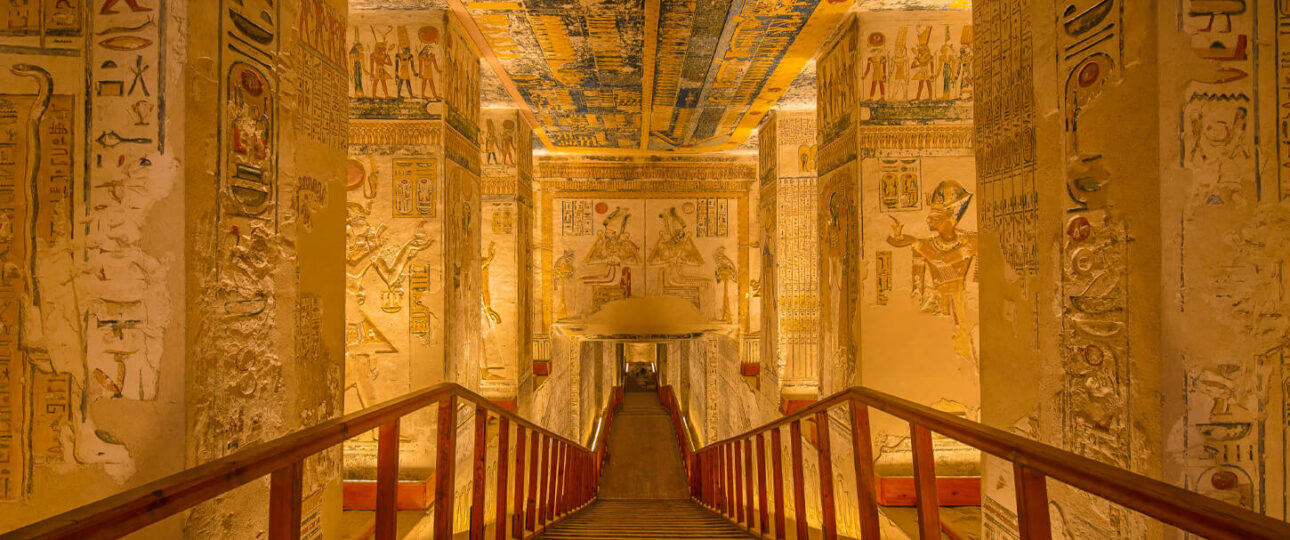Valley of the Kings: Unraveling the Ancient Tombs of Pharaohs
The Valley of the Kings is a testament to Egypt’s glorious past, an ancient burial ground that holds the secrets and treasures of the pharaohs. Situated on the west bank of the Nile River in Luxor, Egypt, this necropolis is one of the most significant archaeological sites in the world. In this article, we will venture into the captivating Valley of the Kings, unraveling its history, tombs, and cultural significance.
- Exploring the Rich Flavors of Egypt’s Traditional Food
The History of the Valley of the Kings
The Valley of the Kings was the burial site for pharaohs and powerful nobles during the New Kingdom period, from the 16th to the 11th century BCE. It was chosen as a royal cemetery for its hidden location and natural rock formations, offering a secure and sacred resting place for the ancient rulers.
The Architecture and Design of the Tombs
The tombs in the Valley of the Kings boast remarkable architectural features and intricate designs. Carved into the cliffs, these tombs are adorned with colorful paintings, intricate hieroglyphics, and religious texts, and all meant to ensure a successful journey to the afterlife.
Tutankhamun’s Tomb: The Most Famous Discovery
One of the most significant discoveries in the Valley of the Kings was the tomb of the boy King Tutankhamun. Unearthed by British archaeologist Howard Carter in 1922, the tomb contained many precious artifacts, including the famous golden mask that adorned the pharaoh’s mummy.
The Curse of the Pharaohs: Myth or Reality?
The discovery of Tutankhamun’s tomb sparked tales of the “Curse of the Pharaohs,” a supposed curse that would befall anyone who disturbed the resting place of a pharaoh. While many dismiss it as mere myth, the stories of mysterious deaths surrounding the tomb added to its intrigue.
The Colossal Statues and Temples
In addition to the tombs, the Valley of the Kings is home to several impressive temples and statues, including the Colossi of Memnon and the Mortuary Temple of Hatshepsut. These monuments further enhance the grandeur of the necropolis.
The Royal Cache: Unearthing Hidden Treasures
In 1881, a cache of royal mummies was discovered in the Valley of the Kings, known as the “Royal Cache.” The mummies of pharaohs and queens, including Ramses II and Hatshepsut, were hidden in a secret tomb.
Luxor’s West Bank: A Gateway to Ancient History
The Valley of the Kings is just one part of the rich archaeological landscape on Luxor’s west bank. The area also houses the Valley of the Queens, the Mortuary Temple of Seti I, and other significant sites that offer invaluable insights into ancient Egyptian civilization.
Preservation and Conservation Efforts
Preserving the delicate tombs and artifacts in the Valley of the Kings is a constant challenge. To protect these ancient wonders, ongoing conservation efforts are undertaken, ensuring that future generations can continue to marvel at the splendor of Egypt’s past.
FAQs about the Valley of the Kings
What is the Valley of the Kings famous for?
The Valley of the Kings is famous for being the burial site of Egypt’s pharaohs and for discovering Tutankhamun’s tomb.
How many tombs are there in the Valley of the Kings?
More than 60 known tombs are in the Valley of the Kings, with discoveries still being made.
Why was the Valley of the Kings chosen as a burial site?
The Valley of the Kings was selected for its hidden location and natural rock formations, providing a secure and sacred resting place for the pharaohs.
Is the “Curse of the Pharaohs” real?
While many believe the “Curse of the Pharaohs” to be a myth, mysterious deaths surrounding the discovery of Tutankhamun’s tomb have added to its allure.
Are the tombs in the Valley of the Kings open to the public?
Many of the Valley of the Kings graves are open to the public, allowing visitors to explore the ancient burial sites.
What is the significance of the Royal Cache?
The Royal Cache is a hidden tomb where a cache of royal mummies, including pharaohs and queens, was discovered.
- Also Read Our Landmarks in Egypt
Conclusion
The Valley of the Kings is a testament to the grandeur and legacy of ancient Egypt’s pharaohs. This remarkable necropolis houses the final resting places of some of history’s most influential rulers, their tombs adorned with colorful paintings and religious texts. As we explore the Valley of the Kings, we are transported back in time, witnessing the magnificence of an ancient civilization that continues to captivate the world.

